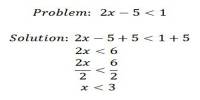Definitions of surds: A root of a positive real quantity is called a surd if its value cannot be exactly determined. It is a number that can’t be simplified to remove a square root (or cube root etc). For example, each of the quantities √3, ∛7, ∜19, (16)^2/5 etc. is a surd.
Equiradical Surds
If two or more surds are of the same order they are said to be equiradical.
Surds are not equiradical when their surd indices are different.
Thus, √5, √7, 2√5, √x and 101/2 are equiradical surds.
But √2, ∛7, ∜6 and 9^2/5 are not equiradical.
Note: Non-equiradical surds can be reduced to equiradical surds.
Thus, non-equiradical surds √3, ∛3, ∜3 become 12√729, 12√81, 12√27 respectively when they are reduced to equiradical surds.
From the definition, it is evident that a surd is an incommensurable quantity, although its value can be determined to any degree of accuracy. It should be noted that quantities √9, ∛64, ∜(256/625) etc. expressed in the form of surds are commensurable quantities and are not surds (since √9 = 3, ∛64 = 4, ∜(256/625) = 4/5 etc.). In fact, any root of an algebraic expression is regarded as a surd.
Note: All surds are irrationals but all irrational numbers are not surds. Irrational numbers like π and e, which are not the roots of algebraic expressions, are not surds.
Information Source:
















